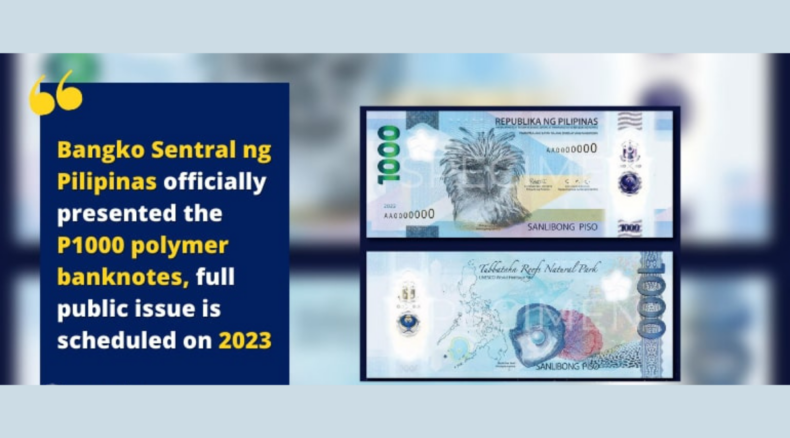Breaking update
A month into the Philippines’ pilot test use of polymer bank notes most Filipinos are yet to see one, mainly due to their limited release.
The Bangko Sentral ng Pilipinas (BSP) began the phased issuance of the new Php1,000 (US$19.50) polymer banknotes on 18 April. An initial 10 million pieces were distributed by the central bank for the rollout, with another 490 million pieces due to be distributed next year — a small fraction of the billions of the old banknotes in circulation.

Reason
Another reason for the scarce sighting of the new currency is because ordinary Filipinos rarely carry such large denomination notes. There is also reluctance among vendors to accept the notes since they are unsure of its validity, with misinformation spreading in social media.
In fact, the notes are so rare that people are known to stash them away as keepsakes, leading to even fewer bills in public circulation.
According to BSP governor Benjamin Diokno the shift to the new polymer banknotes is mainly for better security as the new bills have intricate designs that make counterfeiting difficult.
Polymer banknotes are also environment-friendly, having a lower carbon footprint as they are far more durable than paper money. Polymer notes can be recycled while soiled paper notes are required by law to be collected and burned for disposal, Tony Lambino, BSP managing director, tells SciDev.Net.
Plastic notes are also considered hygienic as they can be disinfected or washed, unlike paper banknotes — an important consideration following the Covid-19 pandemic.
The switch to polymer comes three decades after Australia became the first country to issue polymer banknotes in 1992. There are currently over 50 countries using polymer banknotes, including Canada, Malaysia, Mexico, New Zealand, Nigeria, Papua New Guinea, UK and Vietnam.
Initial opposition to plastic currency came from the growers of abaca, or Manila hemp, which is used to strengthen the existing paper banknotes. However, the impact to growers’ livelihoods and the abaca industry is minuscule and alternate uses are being found for the natural material with the help of the BSP, says Lambino.

Outcomes
Abaca is versatile and can be made for other uses such as in the making of brown envelopes known the world over as ‘Manila envelopes’. Demand for abaca — a species of the banana plant native to the Philippines — could increase if pulp from the fibres are used to make specialty paper for valuable official documents such as land titles and birth certificates.
Others have criticised the decision to replace the images of three World War II heroes on the notes with a depiction of the Philippine eagle in the new polymer banknotes. Lambino justifies use of the image of the Philippine eagle as a reminder of the country’s rich biodiversity and its commitment to a sustainable future.













